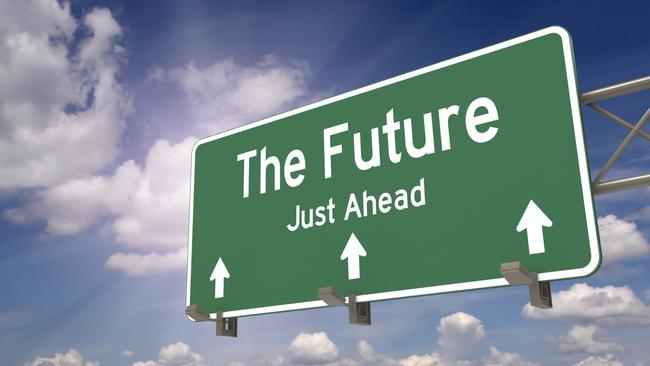How Australia’s economy has changed since 2000 and what that might tell us about 2050

Today is as close to 2050 as it is to the dawn of 2000.
But let’s put a fear of ageing aside and focus instead on how Australia’s and the global economy have changed since 2000 and what that might tell us about 2050.
Perhaps the biggest change has been the (re)emergence of China.
In 2000, China accounted for 6.5 per cent of global GDP; now that is more 19 per cent. The dramatic growth in Australia’s mining sector, driven by China’s expansion, is well known.
With the benefit of hindsight, that should have been obvious. Except it wasn’t. In 2000 Australia was seen as “old economy”.
The future – apparently – was not in mining but in tech, reflected in the booming Nasdaq exchange. It turned out that “old economy” was exactly what was needed at the time, while the Nasdaq took 15 years to beat its 2000 peak.
What will the global economy of 2050 look like?
China, India and the US will likely be the three largest economies. And given Australia’s endowment of natural resources, including critical minerals, mining is likely to still play an important role in our economy.
But the global economy will also look very different. The most obvious changes will be driven by demographics. China’s population is already falling, as are birthrates in most developed economies, which are well below population replacement rates.
By 2050, if the UN’s low-fertility scenario is correct, we could be on the cusp of a falling global population.
The medium-fertility variant, on the other hand, doesn’t see the global population peaking until 2084. On that medium variant, in 2050 the population in Europe will be falling, Asia will be peaking, but in Africa will still be growing.
The UN expects the African population will grow by almost a billion people between now and 2050. That will make Africa unique as its population will be both growing and young. That should in turn see a range of economies across the African continent growing rapidly, supported by expanding working-age populations.
That will be in stark contrast to most of the rest of the world, where populations will generally be either falling or aged.
By 2050, population ageing in Australia won’t be an issue for the future – it will be front and centre. And it will have a clear impact on the structure of our economy.
Australia’s Intergenerational Report makes the point that the care and support sector will grow from around 8 per cent of GDP in 2023 to around 15 per cent in 2062-63.
That growth will see an extraordinary increase in demand for care-sector workers. The former National Skills Commission forecast a doubling in demand for care and support workers by 2050.
A similar picture is likely for much of the globe. Greater demand for care-sector workers will coincide with an ageing global population and much slower population growth that makes those workers harder to find.
As a former governor of the Reserve Bank of Australia, Glenn Stevens, put it in 2015, “demographic factors suggest strongly that, all other things equal, the problem isn’t going to be a shortage of jobs, but instead a shortage of workers”.
For a child born today, this points to a future full of promise on the jobs front. While policy makers have spent most of the past 25 years trying to deal with the challenges of unemployment, policy makers of the future are more likely to devote time and energy to solving the challenges of skill and labour shortages.
Solutions to those challenges will include narrowing the gender gap that remains in the workforce of today, but also thinking about how mature-age workers can retain jobs and retrain later in life as they potentially move into an elongated semi-retirement.
Those finishing their education in 2050 are likely to enter a jobs market where they are in demand. The graduate class of 2050 will be keenly fought over.
AI will change the workforce, just as mechanised farming and robotic factories have done in the past, but that doesn’t mean it will cause widespread unemployment.
What we are more likely to see is an explosion in demand for the services AI can provide. That’s ultimately what the introduction of machines in factories did. It didn’t spark a massive and sustained increase in unemployment, rather it helped spark a massive and sustained increase in consumption of goods and a surge in material living standards. There is no reason to think that AI won’t do the same for the services it can provide.
Of course, the road to 2050 will come with its own challenges, just as the past 25 years have. But as we stand at this midpoint between 2000 and 2050, it seems fair to say that Australia’s economy has generally adapted well to change. The unemployment rate is low and the economy has, outside the pandemic, grown consistently.
With the right approach there is no reason why the next 25 years can’t have the same promise and opportunity as the past 25.
Adam Boyton is the head of Australian economics at ANZ.



For those old enough to remember the turn of the millennium in 2000, the following might come as a confronting thought.